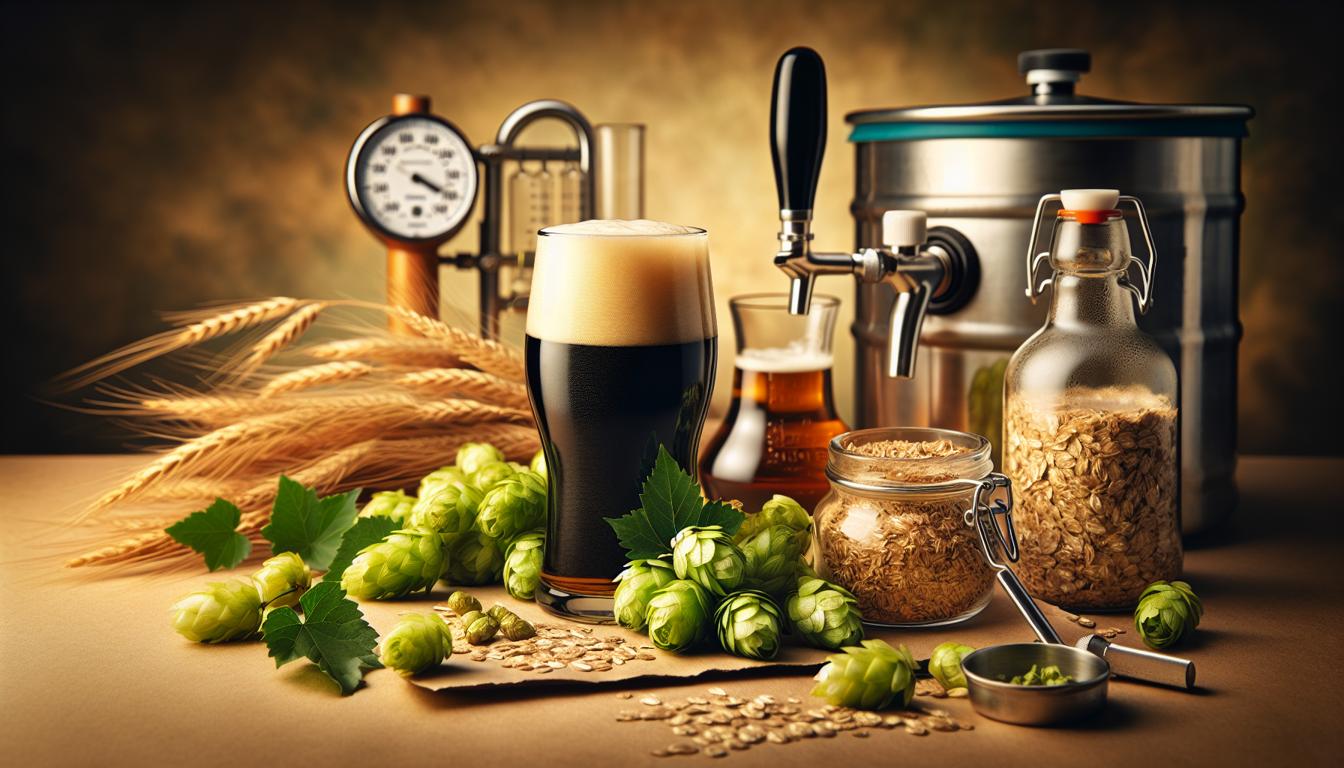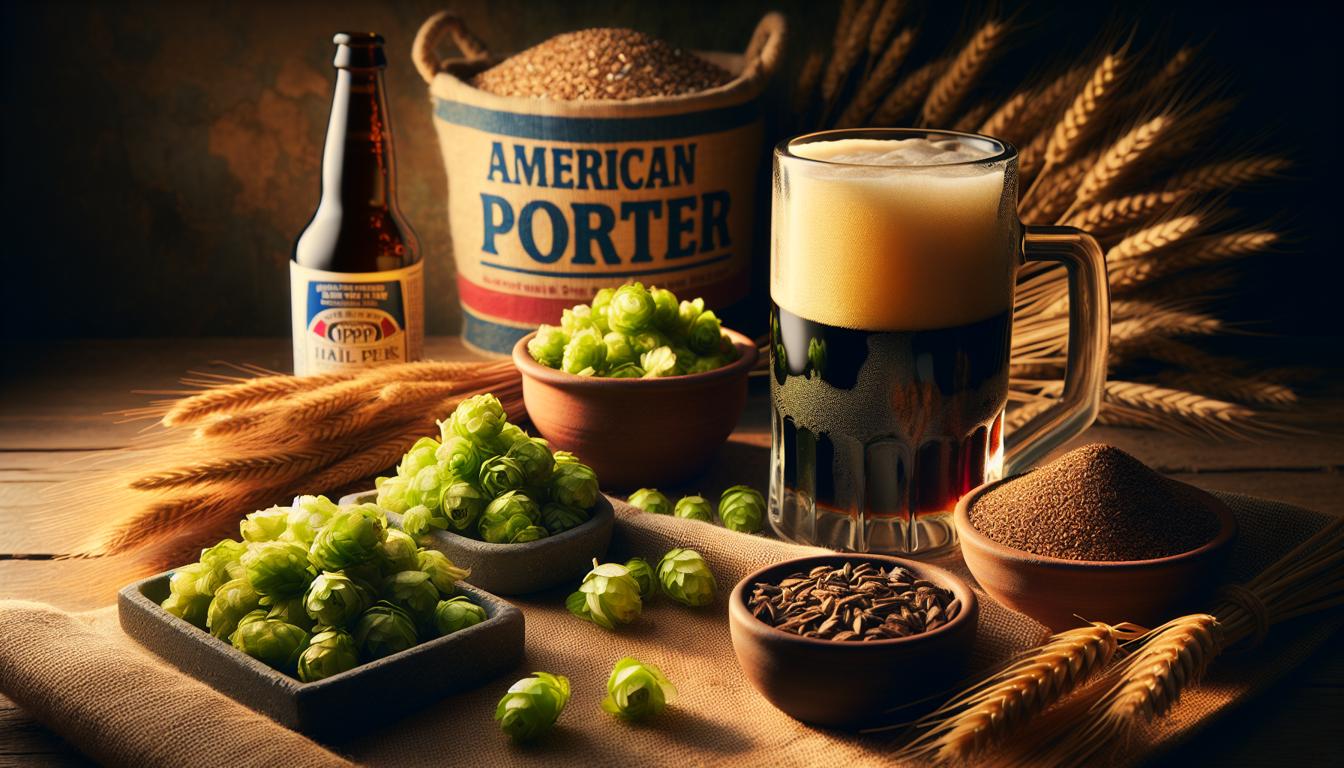Welcome fellow brewers and beer enthusiasts! Today, I would like to share with you my tried and true recipe for brewing an amazing American Porter. This style of beer has a rich history and distinct characteristics that make it a favorite among many craft beer lovers.
A Brief History
The American Porter originated from its English counterpart, the English Porter, which was a popular beer style in the 18th and 19th centuries. However, as American brewers began to put their own twist on traditional styles, the American Porter emerged as a unique and flavorful beer.
In the early days of American brewing, Porters were often brewed with a higher alcohol content and a more pronounced hop character compared to their English counterparts. This variation in ingredients and brewing techniques led to a bolder and more robust beer that is now known as the American Porter.
Key Characteristics
The American Porter is known for its deep, dark color and complex flavor profile. It typically has a moderate to high roasted malt character, which gives it a rich and sometimes bittersweet taste. The use of American hops adds a citrusy or piney hop aroma and flavor, balancing out the maltiness of the beer.

This style often exhibits a medium to full body with a smooth and creamy mouthfeel. It should have a moderate to high carbonation level, enhancing the overall drinking experience. The American Porter is a versatile beer that can be enjoyed year-round, but it is particularly satisfying during the colder months.
Now that we have a better understanding of the American Porter style, let’s dive into the recipe and brewing process!
Recipe
If you follow the steps outlined here, you will likely end out with a nice porter with the following characteristics:
Batch Size: 5 gallons
OG (Original Gravity): 1.060
FG (Final Gravity): 1.015
ABV (Alcohol by Volume): 6.0%
IBU (International Bitterness Units): 35
SRM (Standard Reference Method): 30
Ingredients
To make the porter, you will need:
- 10 lbs (4.5 kg) American 2-row malt
- 1 lb (0.45 kg) American chocolate malt
- 1 lb (0.45 kg) American caramel malt 60L
- 8 oz (227 g) American black patent malt
- 4 oz (113 g) American roasted barley
- 1 oz (28 g) American Cascade hops (60 minutes)
- 1 oz (28 g) American Cascade hops (15 minutes)
- 1 oz (28 g) American Cascade hops (5 minutes)
- 1 packet of American ale yeast
Instructions
1. Mash In: Start by heating 3.5 gallons (13.2 liters) of water to 165°F (74°C). Add the crushed malts to your mash tun and slowly add the hot water, stirring to ensure even distribution. The goal is to achieve a mash temperature of 152°F (67°C). Let the mash rest for 60 minutes.
2. Mash Out: After the mash rest, heat an additional 1.5 gallons (5.7 liters) of water to 180°F (82°C) and add it to the mash tun. Stir the mash for a few minutes to raise the temperature to 168°F (76°C). Let it rest for 10 minutes.
3. Lautering: Transfer the liquid portion of the mash to your brew kettle using a lautering process. This will separate the sweet wort from the spent grains.
4. Boil: Bring the wort to a boil and add the first hop addition (1 oz of Cascade hops). Let it boil for 45 minutes before adding the second hop addition (1 oz of Cascade hops). Continue boiling for an additional 10 minutes before adding the final hop addition (1 oz of Cascade hops).
5. Cool and Pitch: After the boil, cool the wort to approximately 70°F (21°C) using an immersion chiller or another cooling method of your choice. Once the wort has reached the desired temperature, transfer it to a sanitized fermenter and pitch the American ale yeast.
6. Fermentation: Ferment the beer at a temperature range of 65-70°F (18-21°C) for about 7-10 days, or until the fermentation activity has subsided.
7. Bottle or Keg: Once fermentation is complete, transfer the beer to a bottling bucket or keg. If bottling, prime with the appropriate amount of priming sugar for your desired carbonation level. Let the beer condition for at least 2 weeks before enjoying.
Expert Advice and Personal Anecdotes
Now that you have the basic recipe and instructions, I would like to share some expert advice and personal anecdotes to help you brew the best American Porter possible.
– Malt Selection: When selecting your malt, I highly recommend using American malts for an authentic American Porter. The chocolate malt and caramel malt add depth and sweetness, while the black patent malt and roasted barley provide the characteristic roasted flavors.
– Hop Choices: American hops, such as Cascade, are ideal for this style as they bring a citrusy and piney flavor that complements the roasted malt character. However, feel free to experiment with other American hop varieties to create your own unique flavor profile.
– Water Chemistry: Water chemistry plays a crucial role in the final flavor of your beer. For an American Porter, consider adjusting your water to have a slightly higher sulfate level to enhance the hop bitterness and accentuate the roasted malt flavors.
– Yeast Selection: The choice of yeast can greatly impact the overall flavor profile of your beer. American ale yeast strains, such as California Ale or American Ale, are excellent choices for an American Porter. These yeasts provide a clean fermentation profile, allowing the malt and hop flavors to shine.
– Temperature Control: Maintaining a consistent fermentation temperature is key to achieving the desired flavors and aromas in your beer. Use a temperature-controlled fermentation chamber or another method to keep the fermentation temperature within the recommended range.
– Aging and Conditioning: American Porters benefit from some aging and conditioning. After fermentation, consider allowing the beer to sit in secondary fermentation or in the bottle for a few weeks to smooth out any harsh flavors and allow the flavors to meld together.
Conclusion
Brewing an American Porter is a rewarding experience that allows you to create a rich and robust beer with your own personal touch.
Remember to pay attention to the malt selection, hop choices, water chemistry, yeast selection, fermentation temperature, and aging and conditioning process to achieve the best results.
So, grab your brewing equipment, gather your ingredients, and embark on this brewing journey. Cheers to brewing an amazing American Porter that will impress your friends and satisfy your taste buds!
FAQs
What is the best yeast for American IPA?
The best yeast for American IPA is typically a clean and neutral yeast strain, such as California Ale yeast (WLP001) or American Ale yeast (Wyeast 1056). These yeast strains produce a balanced fermentation profile, allowing the hop flavors and aromas to shine through in the beer.
What hops are best for American Porter?
Some popular hop varieties that work well in American Porter are Cascade, Centennial, Chinook, and Willamette. These hops offer a balance of bitterness and aroma that complements the rich, roasted malt flavors of a Porter.
What is American Ale yeast?
American Ale yeast is a type of yeast strain that is commonly used in brewing American-style ales. It is known for producing clean and crisp flavors, with moderate levels of esters and phenols. American Ale yeast typically ferments at higher temperatures than other ale yeasts, resulting in a faster fermentation process. It is a versatile yeast that can be used in a wide range of beer styles, including pale ales, IPAs, and stouts.
What type of yeast is considered ale yeast?
Ale yeast is a type of yeast that is used in the production of ales, which are a type of beer. The most common type of ale yeast is Saccharomyces cerevisiae, which is known for its ability to ferment at warmer temperatures and produce flavors and aromas that are characteristic of ales. Other strains of yeast, such as Brettanomyces, can also be used to produce certain styles of ales with unique flavors and characteristics.
What kind of yeast do you use for American Pale Ale?
The most commonly used yeast for American Pale Ale is a clean, neutral yeast strain such as American Ale yeast (e.g., Wyeast 1056 or White Labs WLP001). This yeast helps to accentuate the hop flavors and aromas while allowing the malt character to shine through.
What is the best yeast for American Porter?
The best yeast for an American Porter would be a clean, neutral yeast strain that allows the malt and hop flavors to shine. Some popular options include American Ale yeast (such as Wyeast 1056 or White Labs WLP001) or English Ale yeast (such as Wyeast 1318 or White Labs WLP002). Ultimately, the choice of yeast will depend on personal preference and desired flavor profile.





Leave a Reply
You must be logged in to post a comment.